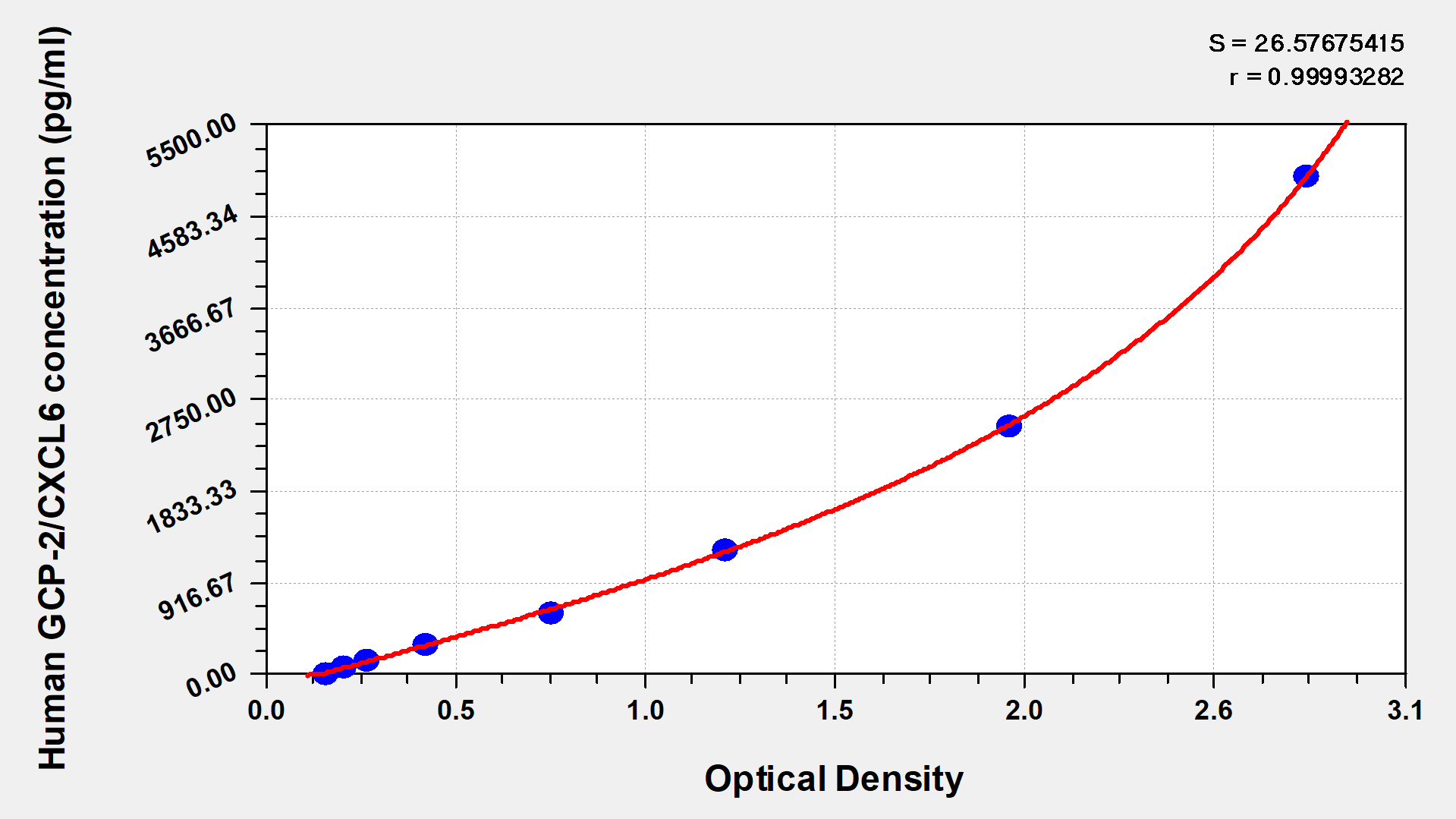This human GCP-2 ELISA kit employs the quantitative sandwich enzyme immunoassay technique to measure the levels of human GCP-2 in serum, plasma, or tissue homogenates. It also uses the enzyme-substrate chromogenic reaction to visualize and analyze the analyte levels through the color intensity. The intensity of the colored product is in direct proportion to the GCP-2 levels in the sample and is measured at 450 nm through a microplate reader.
GCP-2, also known as CXCL6, is a neutrophil-recruiting ELR+ chemokine that signals through the receptors CXCR1 and CXCR2 that are expressed on neutrophils. CXCL6-CXCR1/2 signaling mediates multiple biological processes such as inflammation, immunoreaction, cell growth, and metastasis in humans. It also promotes human hepatocyte proliferation through the CXCR1-NF-κB pathway and suppresses collagen I secretion by hepatic stellate cells. CXCL6 is involved in cancer angiogenesis, metastasis, and immune response. CXCL6 promotes the growth and metastasis of various cancers, including non-small cell lung cancer and osteosarcoma (OS).

 These standard curves are provided for demonstration only. A standard curve should be generated for each set of samples assayed.
These standard curves are provided for demonstration only. A standard curve should be generated for each set of samples assayed. 



